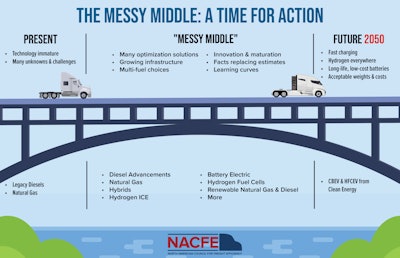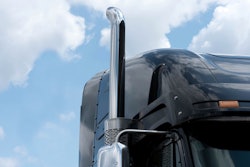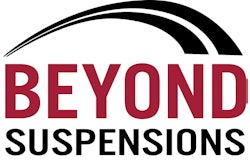
The North American Council for Freight Efficiency (NACFE) released its newest white paper, Navigating the Messy Middle: The Move to More Sustainable Trucking, regarding trucking's adoption of new propulsion options during a press conference Sunday at ATA's Technology & Maintenance Council (TMC) Annual Meeting in Nashville.
NACFE Executive Director Mike Roeth states the new white paper addresses the uncertainty and options available for commercial transportation on its path toward improved freight efficiency and sustainability. With new battery electric, hydrogen, natural gas, hybrid and multiple diesel options solutions entering the market regularly, it can be difficult for carriers to determine which solution is best suited to a fleet’s operation.
“I liken the Messy Middle to a smorgasbord where fleets have a wide variety of options,” says Roeth. “It can seem like an overwhelming number of choices, and we wrote this white paper to bring some clarity to the current situation.”
[RELATED: NACFE warns trucking's zero emission transition will get 'messy']
NACFE first began using the term Messy Middle in 2018 to describe the time between now and when trucking gets to a zero-emission future. Roeth says this new paper goes beyond its original Messy Middle report that compiled powertrain and propulsion options and dives deeper into how trucking is likely to test and consider solutions in the near future as all options are evaluated.
“We have received a good deal of feedback on the idea since introducing it in 2018. Much of it good and some questioning our declaring it a mess. While I don’t think many of us love being in a mess, we don’t always select the situations we find ourselves in,” says Roeth.
“To have a mess means there are a lot of alternatives and I think that’s a good thing.”
NACFE says the paper also addresses how carriers may ultimately select the right solution for their future equipment based on route and duty cycle projections.
“We maintain a fleet of more than 450,000 vehicles and are always looking at ways to optimize our assets,” says Paul Rosa, senior vice president procurement and fleet, Penske. “We are constantly evaluating powertrain options to determine which make sense for each of our Class 2b to 8 commercial vehicle duty cycles. NACFE’s work on defining the Messy Middle and laying out a framework for evaluating the various options should help fleets have a better understanding of which powertrain solutions will work for them.”
[RELATED: 'Incentives and infrastructure' essential to new powertrain acceptance]
NACFE says the paper also notes factors that vehicle owners should consider when choosing a powertrain solution and provides a framework that can be useful in the decision-making process.
 NACFE Executive Director Mike Roeth announced the organization's Run on Less schedule for 2025 during its press conference Sunday at TMC's Annual Meeting in Nashville.
NACFE Executive Director Mike Roeth announced the organization's Run on Less schedule for 2025 during its press conference Sunday at TMC's Annual Meeting in Nashville.
“This paper along with the previously published A Need to Redefine Class 8 Long-Haul Trucking, are part of our Run on Less – Messy Middle efforts which also includes a Bootcamp, and will feature profiles of participating fleets and a dashboard of metrics from the fleets’ operations. All of these efforts are designed to help bring clarity to long-haul trucking,” Roeth says.
Roeth also detailed NACFE's updated Run on Less schedule and expectations for the data that will be uncovered during the next event.
For a copy of the NACFE white paper, go to the NACFE website.










